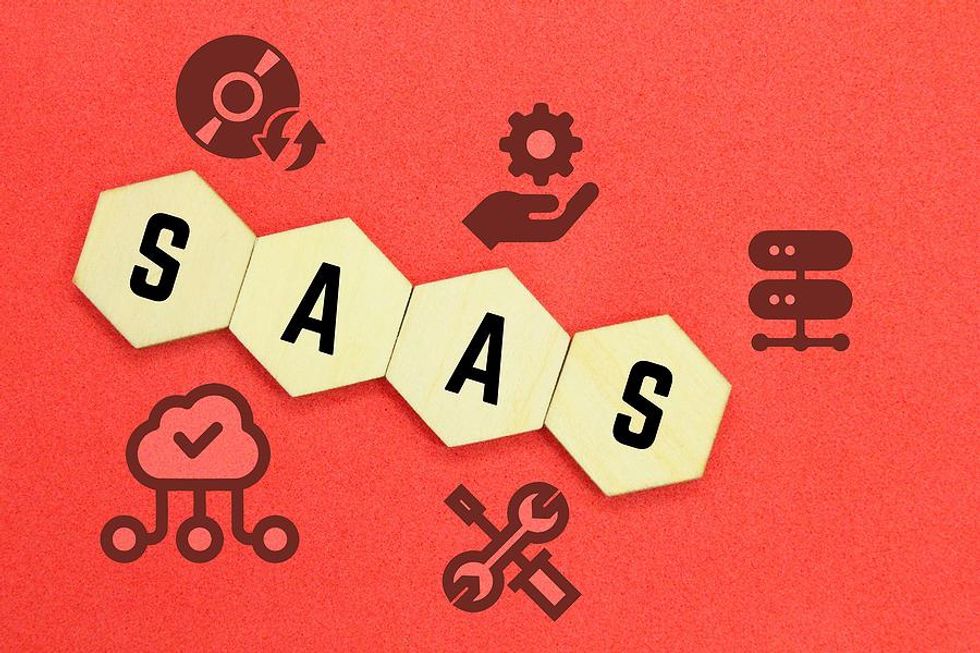
Back in the day, I owned a marketing agency that was acquired by HubSpot in 2013.
We were purchased because we had a reputation for being technically strong at the ‘website design’ aspects of the HubSpot tools at that time. Now imagine my team and I showing up on day one and attending a week or so of corporate training to learn the lay of the land when it finally dawned on me: HubSpot was about to launch a new content management system (they called it the COS) and it was going to be our job to move the existing customers' websites (all 7,800 of them!) onto the new platform with as little customer impact as possible. Add to that the casual comment, “Oh, and by the way, don’t screw it up. We’re preparing to go public in 16 months.”
Let’s just say this taught me the importance of having a framework for technical implementations.
Before We Dive In, Let’s First Discuss Why The Technical Implementation Framework Is So Important To SAAS Businesses

Bigstock
So much effort, energy, resources, and money goes into acquiring customers for any business. And businesses continually focus on reducing their customer acquisition costs (CAC). To make all the effort on the front side of acquiring customers worth it, it’s important to get the new customers “to value” as soon as possible.
If the customer is not successful with the software they just purchased, the business risks not retaining them therefore potentially missing the opportunity of obtaining the optimum lifetime value (LTV) of the customer. Some SAAS companies call it implementation, some call it onboarding. I typically consider implementation to have a more technical setup aspect rather than onboarding which to me is more about getting users logged in and using the software.
Here Are My 7 Critical Steps To Building A Successful Implementation Team At An SAAS Company

Bigstock
1. Understand the Needs of the Customer
First, it’s really important to have an idea of what success to the new customer is defined as. What does the customer intend to do with this new software they have purchased? What is the “job to be done” with the software? What are they trying to accomplish and why? You need to understand what problem the purchase of this software solves in order to successfully implement a new customer into being an active user. You’re going to want to focus on the goals of why the customer wants to use your business's software.
2. Define Success Criteria
Now that you understand the problem that is being solved, it’s important to define the path toward the “aha moment” when a customer sees the value in what they have just purchased. You want this clearly defined and you want to get there as fast as possible. That doesn’t mean that the entire system/instance is set up to its fullest capacity, but it does mean that the software is set up or configured or the correct users are added (whatever it is) and the customer can do something that solves the problem they came to your business to solve. For example, in an email marketing tool, it could be the first email sent, or in a CRM, first contact is added. It will depend on the software.
3. Understand the Steps Required to Get the Customer to Success
This may sound obvious, but it’s going to be important to define the steps required to get to that first value. To reuse the email software example it would look something like this: Add new user, define the email’s content, create email, add email recipient, hit send. That's a super simple example but there will likely be many steps involved and it will be important to outline the concurrent steps in order to make sure that you are organized and get to the time to value in as straight a line as possible. This will also allow you to define the repeatable process.
4. Create a Repeatable Process for the Steps Required
Once we've defined the steps you need to distill this down to a repeatable process. You’re going to want to have this well defined and written down. Some teams I’ve worked with have created a checklist of tasks, others keep it relatively fluid and loose, but I recommend keeping it consistent for the sake of customer experience. I encourage you to try and provide a like kind experience for the customer no matter which person on the team helps time implement their software.
5. Define the Skill Set Required to Staff the Team
Now that you have an understanding of the process it’s time to get familiar with the skills sets required to implement customers. As a first step, a mandatory skill set is willingness to communicate with customers, both verbal and written. Believe it or not I have seen people in the position of implementing customers who did not possess strong customer communication skills and admitted to not ‘liking’ talking to customers. Wow. You want people with strong organizational skills as this person will often be multi-tasking many customers in different stages of the implementation at once. Being that this is a SAAS company and is most like some software mediu to strong technical skills are pretty much a must. However, each implementation will vary from different business to business but it’s required that you identify the technical skill set needs and that you find people with the skill set. For example: at HubSpot I ran a team that was implementing websites so we needed people who had some web development design skills as well as a baseline understanding of DNS settings (i.e., GoDaddy).
6. Get an Understanding of the Volume of Work Required to Implement the Customers
With a clear understanding of the job to be done, that definition of first value, process and skill set needs to be laid out by you. We need to figure out the human bandwidth required to implement customer volume coming onto the software. How many customers will need the implementation? In what timeframe? How long does it take to implement a customer? Is there work that the customer needs to do? Will you be waiting on customers as a bottleneck at times? What is the total time required to onboard a customer? These are all questions to think about when trying to determine the overall human capital requirements to successfully implement the customers. Of time, as the process gets more defined, and the people doing the implementations acquire their tool chest of tips, tricks, snippets, tools. They will speed up. You may even find opportunities to use additional software to decrease the time and effort it takes to implement customers.
7. Set up Clear KPIs
I’ve found that you’re going to want clear and attainable KPIs that motivate the team to deliver successful implementation for the customer. I’ve been most successful when measuring the team on what we call the success of the customer. For example, when we were onboarding customers onto websites, the team’s success criteria was 1) to get the customer’s website live in 2) the shortest amount of time possible. That worked well to motivate the team to be swift (quicktime to value) but also solve for the customer’s goals. I’ve had this go wrong on me once when I had set up KPIs that solved for time to completion of a project and that didn’t always end in the happiest customers.
These are my seven steps to building a successful implementation team. Naturally, the specifics will vary across SAAS businesses but I believe this is a trusty road map to follow. If you’re reading this because you’re trying to figure this out at your business don’t hesitate to reach out to me on LinkedIn. I’d be happy to be a resource.
- The Biggest Challenge To Cross-Border Cloud Implementation ... ›
- 10 Questions Successful Enterprise Tech Buyers Ask - Work It Daily ›
- Why HubSpot Is One Of The Top Companies To Work For - Work It ... ›
- 3 Ways To Emphasize Your ROI On Your Resume - Work It Daily ›
- How To Improve Team Dynamics - Work It Daily ›
- The Most Important Software Technology Executives Are Using - Work It Daily ›
- What Customer Success Has Taught Me About Proximity - Work It Daily ›

 Bigstock
Bigstock Bigstock
Bigstock Bigstock
Bigstock


